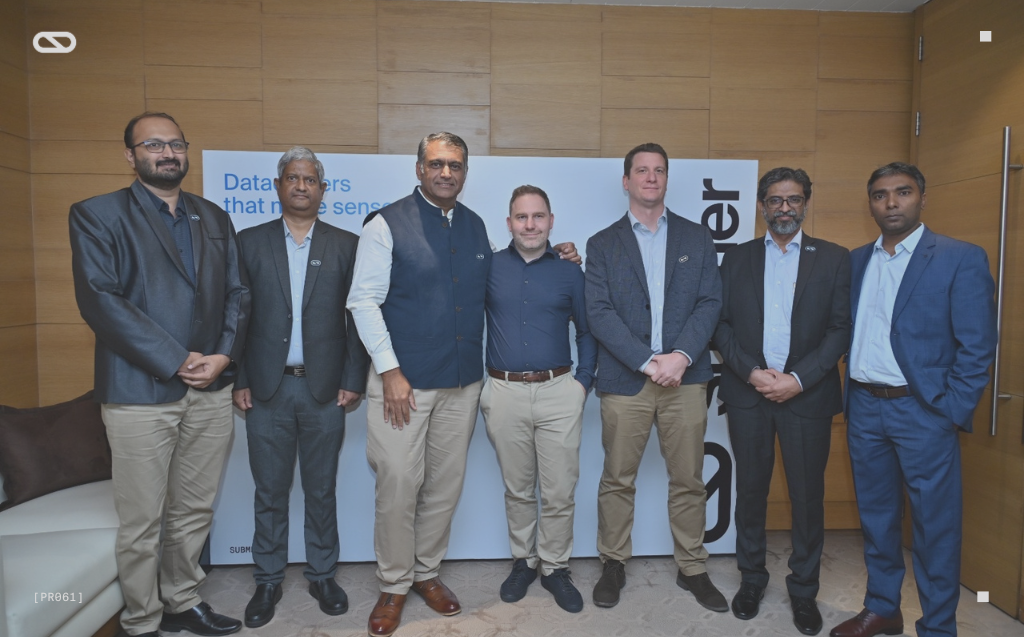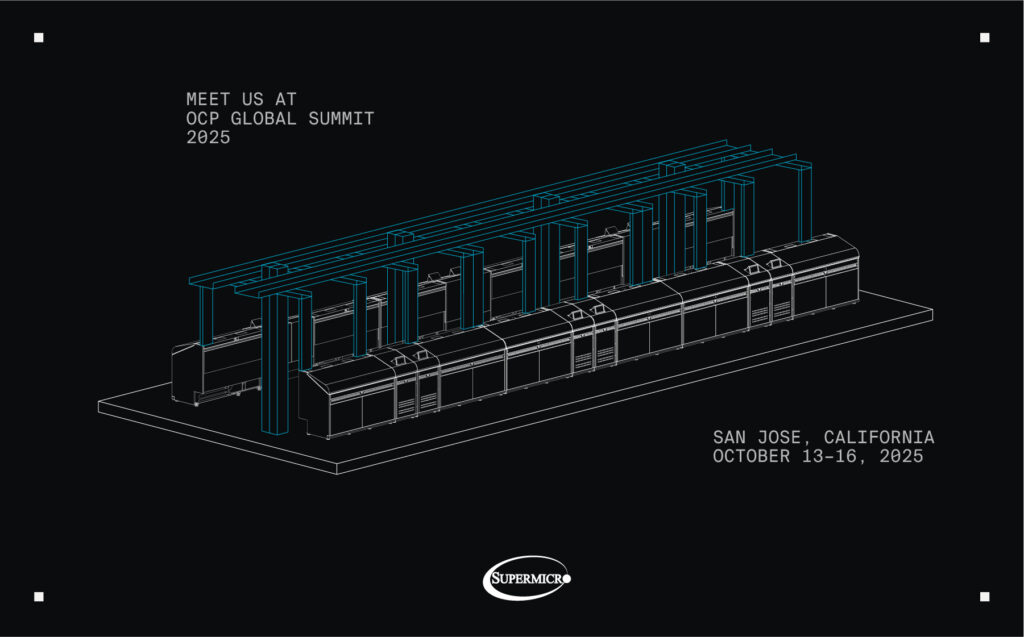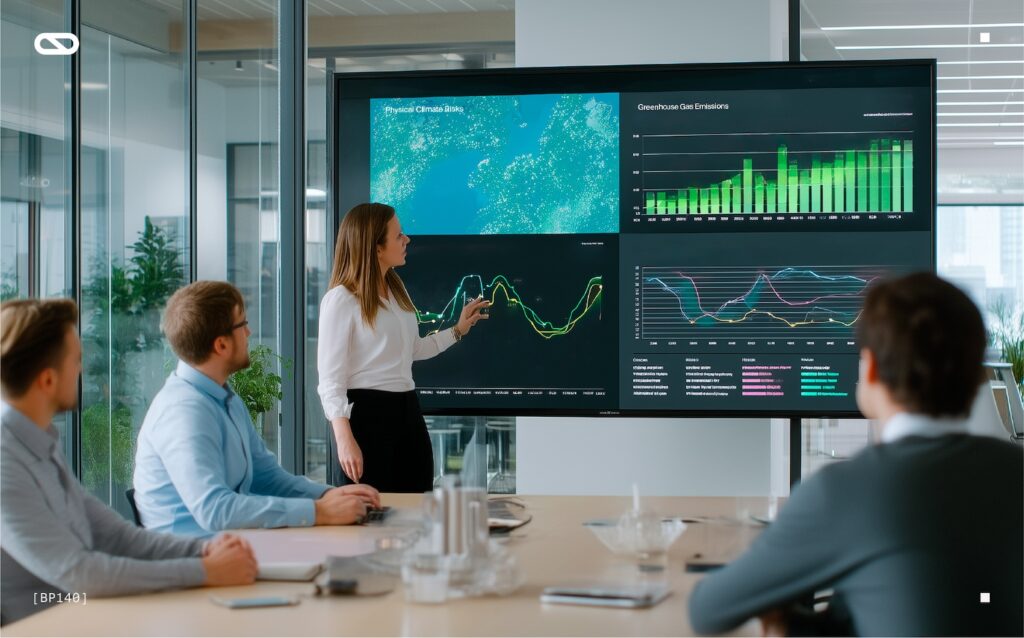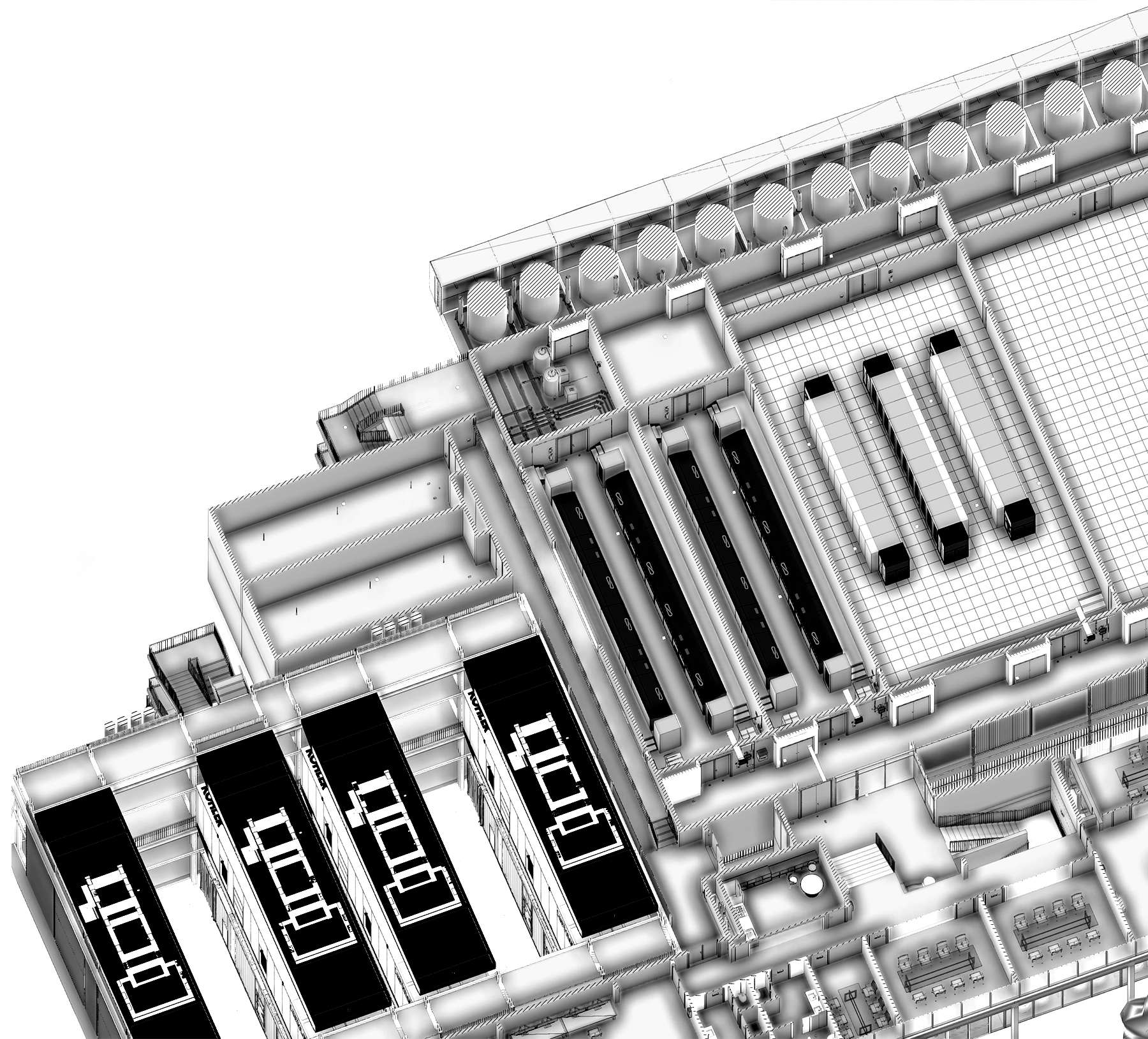In our increasingly digitized world, the rise of diverse forms of computing has brought datacenters into the limelight as critical hubs for ensuring seamless functionality. That being said, as studies and data show, this importance comes with an environmental cost. Moreover, the environmental aspects being affected are of growing importance on a global scale. The recently published World Economic Forum 2025 Risk Report shows that in the coming 10 years, the top 4 risks are related to the environment.
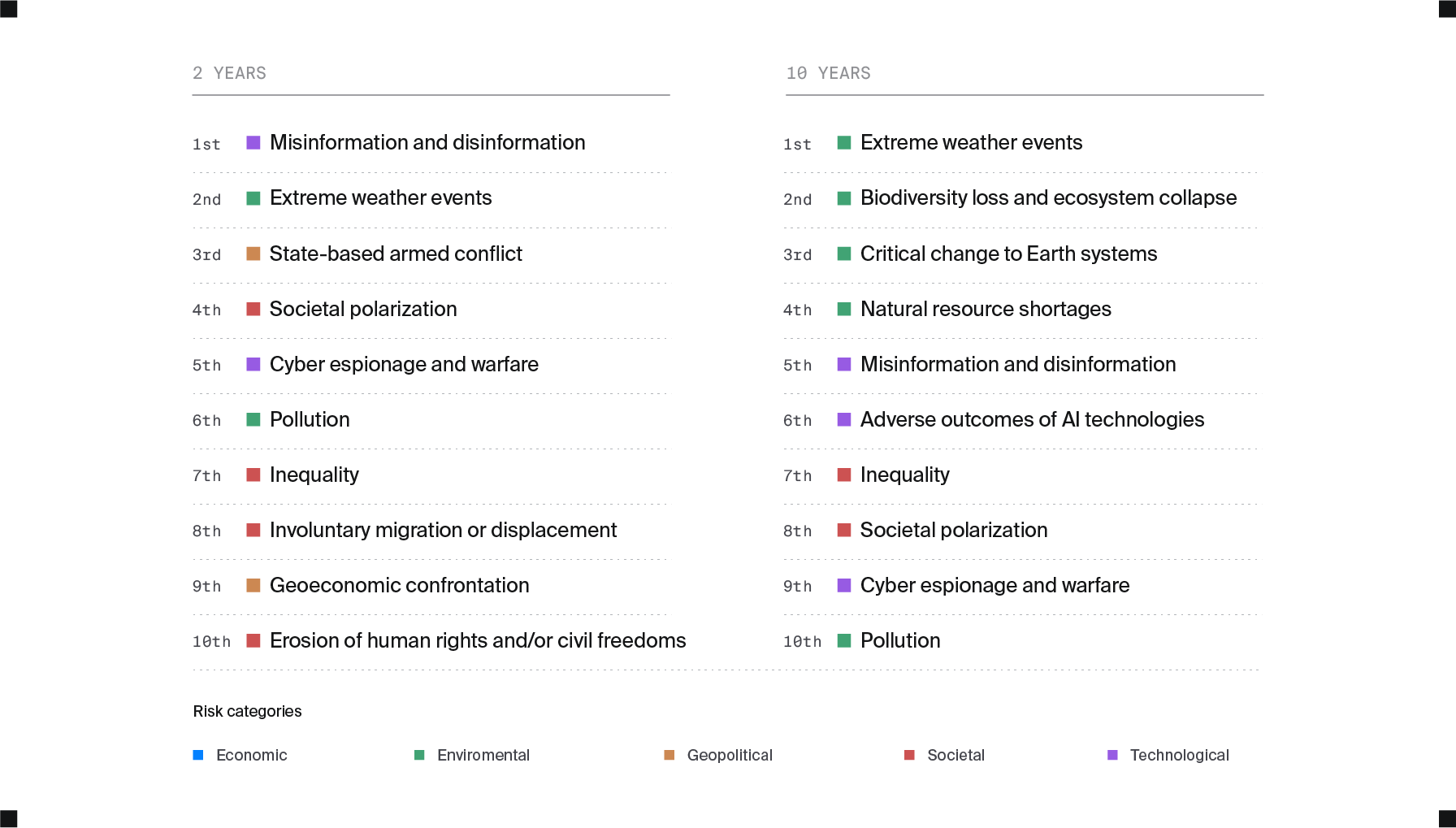
To provide focus to this article, sustainability issues will be analyzed from both an Impact and a Risk perspective. Impact refers to the effect data centers have on the planet and society. On the other hand, Risk is defined by the environmental challenges occurring that could, are and will affect data centers’ bottom line.
What are the environmental impacts and risks datacenters are experiencing
With their growing importance and customer base, these datacenter challenges affect a lengthening list of stakeholders from various increasingly digitalized industries. While sectors such as healthcare, automotive, telecom, energy and manufacturing have traditionally mostly relied on third-parties to house their computing needs, these stakeholders are also responsible in ensuring environmental impacts and risks are quantified, assessed and mitigated.
Impact 1: Growing energy consumption
As we covered in this post, regions that already have a strong data center presence have continued to see high growth, with key regions like Virginia and Ireland already seeing 25%+ and 20%+ (respectively) of their total electricity consumption going to data centers in 20231. This number is only expected to grow in the decade to 2030.
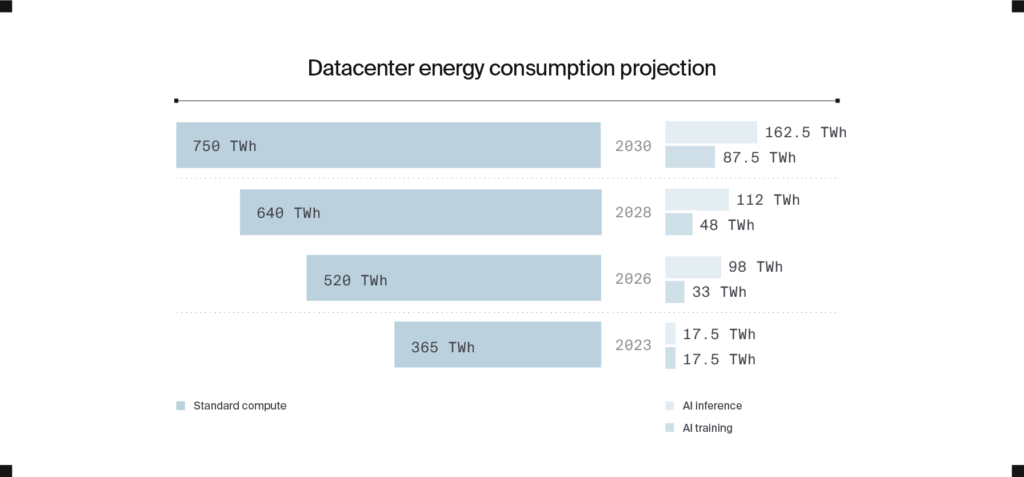
As shown by the Uptime Institute’s holistic analysis on energy consumption projections using a variety of sources, the growth is not only confined to AI applications2. In fact, 75% of total expected computational requirements in 2030 will be destined to standard workloads. It is important to note that as AI inference becomes more prevalent, it will be increasingly harder to differentiate between these two types of compute.
The main consequence of this impact is an increased reliance on fossil fuels as a baseload power source. The related Greenhouse Gas (GHG) emissions will be discussed further on.
Risk 1: Access to sources of power
This extremely tangible risk has been cropping up unevenly depending on the region. Areas in high demand are maintaining their alure due to characteristics other than access to power, such as connectivity, security, grid connections and ties to the broader ecosystems.
Moreover, the demand for additional power is occurring at a time of broader electrification throughout the economy. A wide array of industries are beginning to require more electricity as they move away from fossil fuel energy sources. As datacenters continue to take a growing chunk of total electricity consumption in many regions, competition for this resource will only grow.
Quick solutions to this problem are hard to come by. Lead times for everything from renewable and non-renewable energy sources to grid transmission and distribution, range from 1-15 years to come online3. As a rule of thumb, solutions that provide more power have longer lead times, creating uncertainty for large datacenter projects of 100 MW and more.
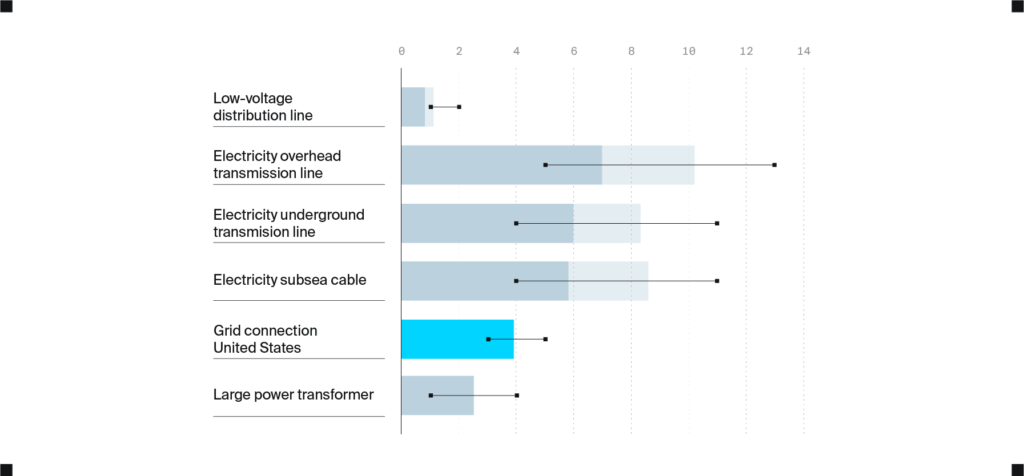
Identifying and deploying energy efficiency initiatives that free up computing power is essential to maintain competitiveness.
Impact 2: Effect on climate change
Inextricably linked to the impact of energy consumption discussed above, the round-the-clock demand profile of datacenters makes them large consumers of electricity generated with fossil fuels. Electricity consumption during operation is one of the biggest sources of GHG emissions for this sector. This is because datacenters are extremely reliant on grid power thanks to their high and consistent consumption. However, the carbon intensity of grids around the world differ greatly.
There are a small handful of regions which took advantage of their natural resources by making large investments in very low carbon, baseload sources such as nuclear, hydropower and geothermal. Examples here include, but are not limited to France, Brazil, Paraguay, Ethiopia, Colombia, Eastern Canada and Iceland.
On the other side of the spectrum, there are still grids that are heavily dependent on fossil fuels for baseload power. Great examples can be found across the USA. For instance, the Associated Electric Cooperative, which mainly serves the state of Missouri, mostly depends on coal and gas for their grid reliability. Datacenters in this state have a significantly higher carbon intensity for the electricity consumed than their neighbors4.
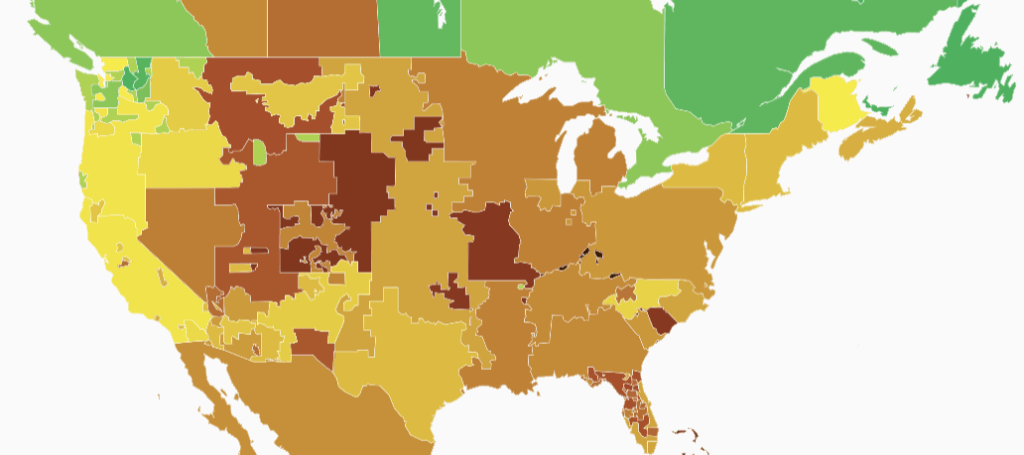
This reality collides with the explosive demand for electricity from datacenters in specific regions which is set to be supported by further deployment of thermal power5.
To summarize, to be able to decarbonize, datacenters need to move to 24/7 renewable energy consumption or Carbon Free Energy (CFE). This objective is challenging as electricity demand is growing across industries, straining grids and requiring large-scale energy storage and flexible infrastructure. Renewables like wind and solar are intermittent, making consistent power supply difficult without advances in battery storage, demand-response systems, or other forms of backup generation. Moreover, competition for clean energy from other sectors could drive up costs and limit availability, requiring smarter grid planning and management, and further technological breakthroughs to achieve a smooth transition.
Risk 2: Effects of climate change
In the meantime, 2024 was the hottest year on record, surpassing the 1.5ºC limit set by the Paris Agreement nine years earlier6. Climate change is here, and it poses multifaceted risks to data centers, extending beyond physical infrastructure to impact supply chains, customers, employees, and other stakeholders of the value chain. These challenges include disruptions in the procurement of essential materials, increased strain on local resources, and heightened environmental concerns within host communities.
A pertinent and very visible example is the aftermath of Hurricane Helene in September 2024, which severely affected Spruce Pine, North Carolina. This town is home to a unique quartz mine that supplies high-purity quartz crucial for semiconductor manufacturing—a foundational component of datacenter operations. The hurricane’s devastation led to significant flooding, power outages, and infrastructure damage, forcing the mine to halt operations for at least two weeks. Experts have been warning that these companies operate a “pinch point” within the complex supply chain behind silicon wafers. Although exact cost figures have not been shared, these kinds of closures disrupt the global semiconductor supply chain, underscoring the vulnerability of critical material supplies to extreme weather events intensified by climate change7.
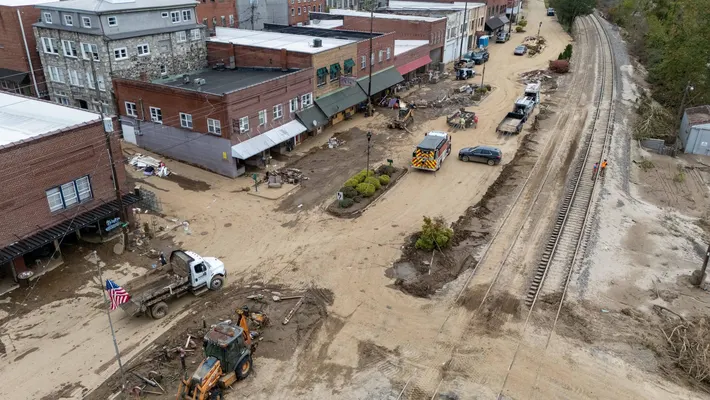
Spruce Pine, North Carolina after Hurrican Helene in September 2024 / Source: Forbes
This practical example shows a reality that is still difficult to forecast and quantify. Climate change risks are only just beginning to be priced into the sector and will continue to balloon.
Next, we will discuss another topic inextricably linked to climate change, water consumption and water stress.
Impact 3: High water consumption
On the impact side, datacenters as an industry group are large consumers of water. That being said, for new datacenters deployed today, and for those that are being retrofitted, technology exists to make their operations waterless or nearly so. However, the need to do this should depend on local availability of water. The reason for this is simple, water is extremely effective in cooling things down. When used in datacenter secondary cooling, such as with adiabatic towers, it displaces electricity consumption.
As discussed in the earlier sections, electricity consumption has an economic, environmental and even social impact. We also wrote about the high water consumption of electricity generation (indirect consumption). Therefore, direct consumption of water by a datacenter needs to adapt to local realities.
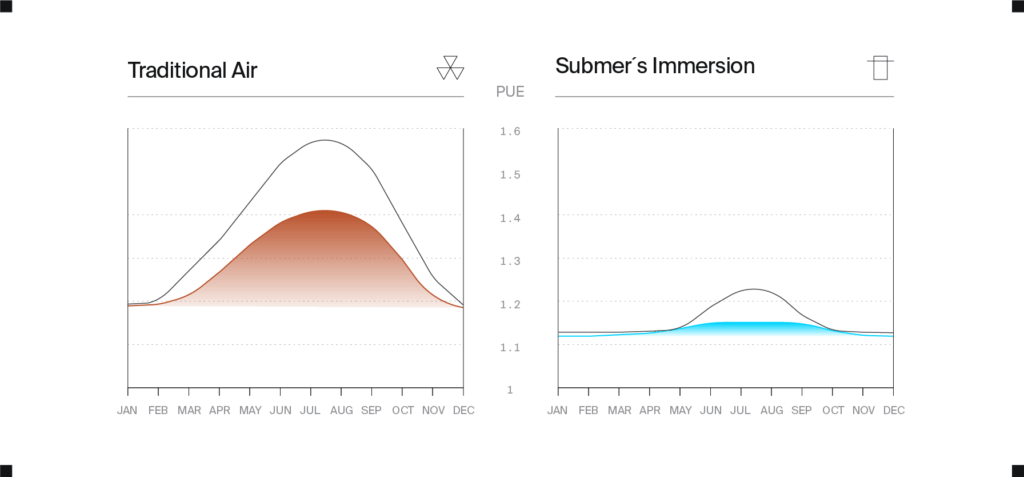
Risk 3 – Water stress
Exacerbated by climate change, this topic deserves the spotlight on its own due to the absolute reliance we have on water as a natural resource. As mentioned in the previous section, the question of whether to use water or not needs to be analyzed locally. When water is plentiful and the watershed’s ability to regenerate and outstrip demand from the datacenters and other local consumers, it might be a good location to use efficient water-based solutions such as adiabatic spray systems. On the other hand, if a region is water-stressed and/or has many industries and communities competing for this resource, waterless secondary cooling technologies are key in ensuring resiliency and social license to operate.
However, the conditions themselves are a moving target as our planet warms. Areas today that receive vast amounts of water could change relatively quickly and vice versa. Moreover, droughts and heatwaves often come in pairs, catching consumers by surprise when they are most in need.
This issue is already sparking community opposition in various regions around the world as more stakeholders compete for a resource that can quickly disappear. For example, in dry Querétaro, Mexico, a burgeoning hub for datacenters with investments from major Hyperscalers, there are growing apprehensions about the industry’s substantial electricity and water demands. Local communities have experienced severe water shortages, leading to protests against the prioritization of industrial needs over citizens’ access to water8.
Datacenters need to analyze and take proactive steps to ensure they are not being built and operated to be reliant on this underpriced resource.
Other sustainability impacts
While the Impacts covered above have the largest implications for datacenters, other environmental and social factors should not be overlooked. One such impact is noise pollution. Air cooled datacenters require extensive cooling infrastructure, including high-powered fans and HVAC systems, which generate significant noise levels. While this may not be a major concern in industrial zones, datacenters located near residential areas can contribute to noise pollution that affects local communities and employees onsite.
Another sustainability impact is electronic waste (e-waste) generation. Datacenters continuously upgrade and replace servers, storage devices, and networking equipment to maintain performance and efficiency. This leads to a steady stream of obsolete or non-functional hardware that enters the End-of-Life (EOL) phase of its lifecycle. Recent studies show that more than 80% of all electrical and electronic waste remains untraceable when they reach this final stage of the lifecycle9. As there are still many unknowns here, it is difficult to understand the ramifications and scale of this challenge.
Other sustainability risks
Beyond the primary environmental risks discussed above, datacenters also face others, while more nuanced, can still affect operations and reputation. One such risk is dependency on minerals sourced in violation of human rights and which end up being used in servers, cooling systems, and networking hardware10. Increasing scrutiny from a wider variety of stakeholders can expose companies to reputational damage. As sustainability reporting moves to become more transparent in most parts of the world, failure to account for ethical supply chain practices may undermine brand credibility and investor confidence.
In a changing world, risks can frequently become cumulative and harder to foresee. For example, climate change and geopolitical tensions can combine to provoke exponential damage to datacenter value chains. This is particularly true when looking at the complexity of datacenter value chains with a significant number of choke points.
Conclusion
In this piece, we have presented a high-level view of major Impacts and Risks that are affecting the datacenter industry today. The sector is experiencing tremendous growth and increased importance in the global economy. Despite the high impact in its current state, it has the potential to be a low impact sector, ensuring continuity in decarbonizing societies. However, there is a long road ahead. Stakeholders must go above and beyond to navigate and minimize relevant impacts and risks as a strategic imperative.
Bibliography
- Powering Intelligence: Analyzing Artificial Intelligence and Data Center Energy Consumption, EPRI ↩︎
- IT Efficiency: an untapped power resource, Uptime Institute ↩︎
- Average lead times to build new electricity grid assets in Europe and the United States, 2010-2021, IEA; A global analysis of renewable energy project commissioning timelines, ETH Zurich and MIT ↩︎
- Electricity Maps ↩︎
- Data Centers: More Gas Will Be Needed To Feed U.S. Growth, S&P Global ↩︎
- WMO confirms 2024 as warmest year on record at about 1.55°C above pre-industrial level, WMO ↩︎
- Hurricane Helene’s devastation has shut down a one-of-a-kind mine for AI chips, Business Insider ↩︎
- La expansión de los data centers agudiza las sequías y acelera el calentamiento global, La Política Online ↩︎
- Étude – Impacts environnementaux du numérique dans le monde, Green IT ↩︎
- Transition Mineral Tracker, Business & Human Rights Resource Centre ↩︎

